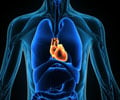In North America's most impoverished communities, a leading cause of heart disease remains overlooked reveals researchers.

Chagas disease is a parasitic infection most commonly transmitted through blood-feeding triatomine bugs, but it can also be spread through pregnancy, blood transfusion, and contaminated food or drink. Up to 30% of infections result in debilitating and life-threatening heart disease and severe intestinal and liver complications. People living in extremely impoverished communities are most vulnerable because of poor-quality housing and inadequate access to health care, education and vector control.
Chagas disease infects an estimated 10 million people worldwide; however, much less is known about the true disease burden in North America. According to some preliminary estimates, Mexico ranks third, and the United States seventh, in terms of the number of infected individuals with Chagas disease in the Western Hemisphere, where 99% of the cases occur.
It is also estimated that 40,000 pregnant North American women may be infected with T. cruzi at any given time, resulting in 2,000 congenital cases through mother-to-child transmission.
A lack of facilities offering diagnosis and treatment of Chagas disease has prevented at-risk and infected people from receiving the critical and often life-saving attention they need. While two drug treatments currently exist, they cause undesirable adverse effects, are unsafe for pregnant women and are not approved for use in the United States.
"The research community is pushing science as hard as possible to ensure we get new treatments to people living with Chagas disease, but we need to ensure that governments prioritize the disease," said Dr. Bernard Pecoul, a co-author of the editorial and Executive Director of the Drugs for Neglected Diseases initiative (DNDi). "It is urgent to diagnose and treat patients with what we have available today, until research and development efforts deliver true breakthroughs for the millions in need." DNDi has produced a pediatric dosage form of benznidazole for children with Chagas disease, and is currently developing new drug candidates for a truly novel, safe, effective and affordable treatment for all patients.
Advertisement
Source-Eurekalert












